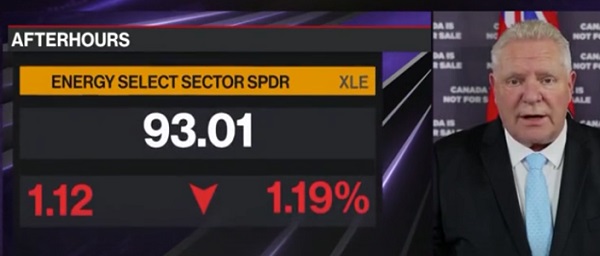Alberta
FINALLY! Province announces new Red Deer Hospital expansion and it’s much bigger than previous plan

Red Deer hospital $1.8B expansion builds for the future
Alberta’s government will invest $1.8 billion to redevelop and expand the Red Deer Regional Hospital Centre as part of the province’s strategy to increase health care capacity, providing central Albertans with better hospital care for years to come.
The $1.8 billion hospital expansion is the largest in Alberta’s history and the largest taxpayer investment in the history of central Alberta. It will begin with a $193 million investment over the next three years and will include 200 new in-patient beds, increasing hospital capacity from 370 beds to 570 beds or by 54 per cent.
The expansion also provides for three new operating rooms, increasing surgical capacity to 14 operating rooms.
A new cardiac catheterization lab will also be part of the hospital’s expansion.
“For too long, central Albertans have been waiting for these critical upgrades and expansion of the Red Deer Regional Hospital. That’s why we’ve made expanding the Red Deer Regional Hospital a priority, and we’re putting our money where our mouth is. Alberta’s Recovery Plan has already seen healthcare infrastructure built from Grande Prairie to Calgary, and now, it’s making sure world-class health care is there for Red Deer and central Alberta for years to come with the largest investment in the history of central Alberta.”
“This important investment will ensure the Red Deer Regional Hospital Centre continues to provide exceptional quality hospital care for the residents in the Red Deer region for decades to come. This investment is a key component of the Alberta government’s commitment to building health-care capacity throughout the province.”
The project’s next steps include functional programming and design. Completion of the expansion is slated for 2030-2031.
“Red Deer and central Alberta’s growing populations mean that our ability to effectively provide health care with the current hospital is limited, resulting in all too frequent disruptions to patient care. This needed redevelopment will increase capacity and expand services to meet central Albertans’ needs into the future. It’s another example of our government’s commitment to build health system capacity throughout Alberta.”
“I know how important this project is to the residents of central Alberta. This important expansion of the Red Deer hospital will create jobs and improve residents’ access to health-care services in the years to come.”
“The expansion of the Red Deer Regional Hospital Centre is extremely significant for our city and long overdue. This historical investment means that central Albertans will benefit from increased surgical and in-patient capacity, benefiting our community in ways that were previously not possible. In addition, I am so pleased that local patients will finally have a cardiac catheterization lab as part of this amazing expansion, which will literally save lives. As the third-largest city in the province, this expansion will go a long way in providing the medical care and attention we have long needed and strongly advocated for.”
“This is welcome news for our staff and physicians at Red Deer Regional Hospital Centre, as well as to all those we care for within its walls. Being able to expand our in-patient capacity, as well as critical programs like surgical services with new operating rooms, is paramount to continuing to serve the health-care needs of central Albertans as so many rely on Red Deer Regional. On behalf of Alberta Health Services, we are grateful for the support of government partners in moving this project forward, and for the ongoing efforts of our teams who eagerly await this expansion.”
“This is a monumental day for our city and for the central Alberta region. It is with extreme gratitude that we recognize the provincial government for this significant investment in the care of central Albertans.”
“Located along one of the busiest transportation corridors in the province, Red Deer County serves close to 20,000 residents within central Alberta. The county welcomes this news and is appreciative of the Government of Alberta’s capital investment to our region for the improvement of health care for our residents.”
Quick facts
- The Red Deer Regional Hospital Centre is the busiest hospital outside of Edmonton and Calgary. It has the fourth-highest volume of any Alberta Health Services’ facility.
- Approximately 50 per cent of patients seen at the hospital are referred from communities outside of Red Deer.
- The hospital offers a full spectrum of acute care, including advanced surgery, internal medicine and diagnostics, as well as obstetrics, pediatrics, oncology, critical care and emergency care.
- $100 million was allocated to the project in Budget 2020.
Alberta
Big win for Alberta and Canada: Statement from Premier Smith

Premier Danielle Smith issued the following statement on the April 2, 2025 U.S. tariff announcement:
“Today was an important win for Canada and Alberta, as it appears the United States has decided to uphold the majority of the free trade agreement (CUSMA) between our two nations. It also appears this will continue to be the case until after the Canadian federal election has concluded and the newly elected Canadian government is able to renegotiate CUSMA with the U.S. administration.
“This is precisely what I have been advocating for from the U.S. administration for months.
“It means that the majority of goods sold into the United States from Canada will have no tariffs applied to them, including zero per cent tariffs on energy, minerals, agricultural products, uranium, seafood, potash and host of other Canadian goods.
“There is still work to be done, of course. Unfortunately, tariffs previously announced by the United States on Canadian automobiles, steel and aluminum have not been removed. The efforts of premiers and the federal government should therefore shift towards removing or significantly reducing these remaining tariffs as we go forward and ensuring affected workers across Canada are generously supported until the situation is resolved.
“I again call on all involved in our national advocacy efforts to focus on diplomacy and persuasion while avoiding unnecessary escalation. Clearly, this strategy has been the most effective to this point.
“As it appears the worst of this tariff dispute is behind us (though there is still work to be done), it is my sincere hope that we, as Canadians, can abandon the disastrous policies that have made Canada vulnerable to and overly dependent on the United States, fast-track national resource corridors, get out of the way of provincial resource development and turn our country into an independent economic juggernaut and energy superpower.”
Alberta
Energy sector will fuel Alberta economy and Canada’s exports for many years to come

From the Fraser Institute
By any measure, Alberta is an energy powerhouse—within Canada, but also on a global scale. In 2023, it produced 85 per cent of Canada’s oil and three-fifths of the country’s natural gas. Most of Canada’s oil reserves are in Alberta, along with a majority of natural gas reserves. Alberta is the beating heart of the Canadian energy economy. And energy, in turn, accounts for one-quarter of Canada’s international exports.
Consider some key facts about the province’s energy landscape, as noted in the Alberta Energy Regulator’s (AER) 2023 annual report. Oil and natural gas production continued to rise (on a volume basis) in 2023, on the heels of steady increases over the preceding half decade. However, the dollar value of Alberta’s oil and gas production fell in 2023, as the surging prices recorded in 2022 following Russia’s invasion of Ukraine retreated. Capital spending in the province’s energy sector reached $30 billion in 2023, making it the leading driver of private-sector investment. And completion of the Trans Mountain pipeline expansion project has opened new offshore export avenues for Canada’s oil industry and should boost Alberta’s energy production and exports going forward.
In a world striving to address climate change, Alberta’s hydrocarbon-heavy energy sector faces challenges. At some point, the world may start to consume less oil and, later, less natural gas (in absolute terms). But such “peak” consumption hasn’t arrived yet, nor does it appear imminent. While the demand for certain refined petroleum products is trending down in some advanced economies, particularly in Europe, we should take a broader global perspective when assessing energy demand and supply trends.
Looking at the worldwide picture, Goldman Sachs’ 2024 global energy forecast predicts that “oil usage will increase through 2034” thanks to strong demand in emerging markets and growing production of petrochemicals that depend on oil as the principal feedstock. Global demand for natural gas (including LNG) will also continue to increase, particularly since natural gas is the least carbon-intensive fossil fuel and more of it is being traded in the form of liquefied natural gas (LNG).
Against this backdrop, there are reasons to be optimistic about the prospects for Alberta’s energy sector, particularly if the federal government dials back some of the economically destructive energy and climate policies adopted by the last government. According to the AER’s “base case” forecast, overall energy output will expand over the next 10 years. Oilsands output is projected to grow modestly; natural gas production will also rise, in part due to greater demand for Alberta’s upstream gas from LNG operators in British Columbia.
The AER’s forecast also points to a positive trajectory for capital spending across the province’s energy sector. The agency sees annual investment rising from almost $30 billion to $40 billion by 2033. Most of this takes place in the oil and gas industry, but “emerging” energy resources and projects aimed at climate mitigation are expected to represent a bigger slice of energy-related capital spending going forward.
Like many other oil and gas producing jurisdictions, Alberta must navigate the bumpy journey to a lower-carbon future. But the world is set to remain dependent on fossil fuels for decades to come. This suggests the energy sector will continue to underpin not only the Alberta economy but also Canada’s export portfolio for the foreseeable future.
-

 2025 Federal Election1 day ago
2025 Federal Election1 day agoMORE OF THE SAME: Mark Carney Admits He Will Not Repeal the Liberal’s Bill C-69 – The ‘No Pipelines’ Bill
-

 2025 Federal Election23 hours ago
2025 Federal Election23 hours ago‘I’m Cautiously Optimistic’: Doug Ford Strongly Recommends Canada ‘Not To Retaliate’ Against Trump’s Tariffs
-

 2025 Federal Election1 day ago
2025 Federal Election1 day ago‘Coordinated and Alarming’: Allegations of Chinese Voter Suppression in 2021 Race That Flipped Toronto Riding to Liberals and Paul Chiang
-

 International2 days ago
International2 days agoTrump’s ‘Golden Dome’ defense shield must be built now, Lt. Gen. warns
-

 Business23 hours ago
Business23 hours agoCanada may escape the worst as Trump declares America’s economic independence with Liberation Day tariffs
-

 Business15 hours ago
Business15 hours agoCalifornia planning to double film tax credits amid industry decline
-

 Alberta23 hours ago
Alberta23 hours agoBig win for Alberta and Canada: Statement from Premier Smith
-

 Alberta1 day ago
Alberta1 day agoEnergy sector will fuel Alberta economy and Canada’s exports for many years to come






